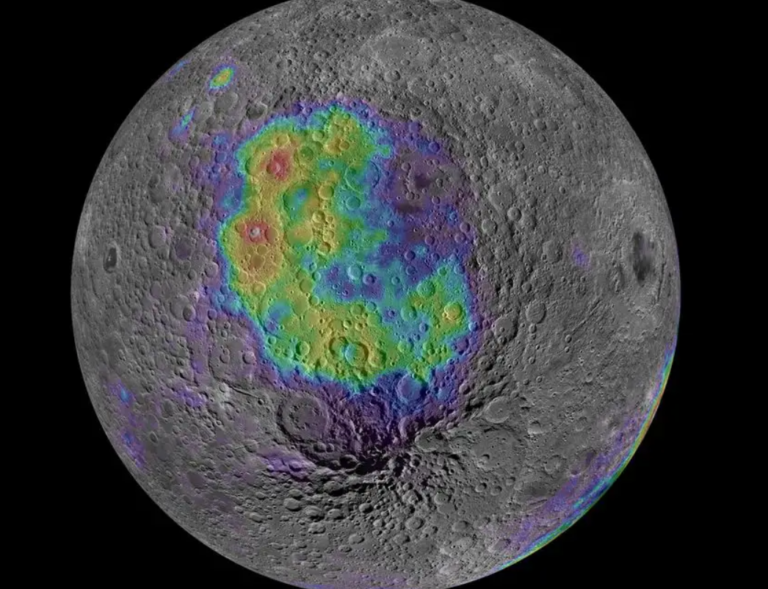Scientists have uncovered a colossal structure weighing 2.18 billion kilograms beneath the surface of the Moon.
One of the largest preserved craters in the Solar System is located in the South Pole-Aitken Basin in the far side of Our Moon. Several orbiters and the Chinese lander Chang’e-4 have studied this region of interest in recent years. Scientists have lately reported an interesting finding underwater.

Planetary scientists have found an object that goes from 300 km (186 miles) in depth and a mass of 2. 18 billion billion kilograms. The research team proposes that this mass could have come from the asteroid that formed the crater as highlighted in a report in journal Geophysical research Letters.
Lead author Peter B. James from Baylor University expressed his finding by saying “It’s as if someone buried a pile of metal five times larger than the Big Island of Hawaii beneath the Earth’s surface. ”
This discovery was made possible with the help of NASA’s GRAIL mission, which is tasked with the observation of small fluctuations in the gravitational field of the Moon. These observations enable us to understand the internal makeup of our natural satellite. It was determined that the mass that was measured was sufficient enough to cause the basin floor to dip over half a mile or nearly one kilometer. The diameter of the crater is assumed to be 2,500 kilometers (1,550 miles), and the gravitational force is indeed remarkable.
James further explained, “We combined this data with Lunar Reconnaissance Orbiter topography measurements of the South Pole-Aitken basin to find that there is an unexpectedly large mass several hundred kilometers below the surface. ” He further added, “We estimated that there could be a massive chunk of metal from the asteroid that formed the crater still embedded in the Moon’s interior.
The team was able to explain this anomaly using computer simulations. There is possibility that rather of diving into the core the asteroid remained in the mantle upon the impact approximately 4 billion years ago. A further possible explanation is that the Moon’s subsequent solidification allowed dense oxides to precipitate and concentrate as the magma ocean crystallised and differentiated.
The South Pole-Aitken Basin has become a target for many space agencies because of its peculiarities. This region provides a window into understanding the lunar past and interior. Moreover, it is a suitable setting to examine the effects of a devastating collision on the surface of a rocky planet.
Do not forget to share your opinion with us to provide you with the best posts !




0 Comments